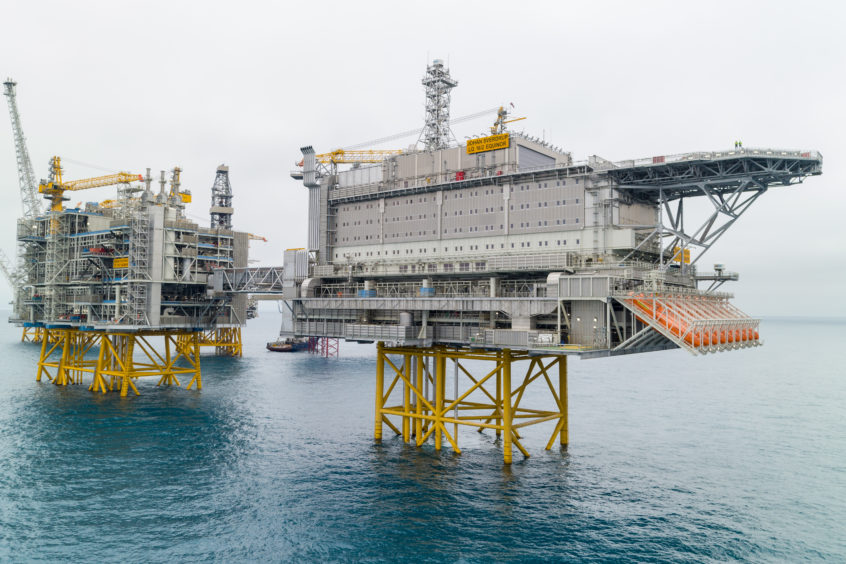
Norway has said it will soon decide whether to cut its oil production to help support plummeting prices.
The country’s petroleum ministry first suggested the move prior to OPEC+ clinching a historic deal on April 13 to take 9.7mn bpd of supply offline next month. Despite its unprecedented size, the OPEC+ cut failed to prevent a further price rout, as COVID-19 lockdowns continue to wreak havoc on fuel demand and storage runs out. Brent slipped below $20 per barrel this week for the first time in 18 years, while front-month West Texas Intermediate (WTI) sank below zero for the first time in history.
Oslo reiterated on April 21 that a decision on cuts would be taken soon. The last time Norway took such a step was almost two decades ago. The cut would be implemented unilaterally, the government says, warding off antitrust concerns.
Norway is Western Europe’s biggest producer, lifting 2.04mn bpd of oil and other liquids in March. The industry is the country’s largest economic segment, and is vital in financing the Norwegian welfare state. The vast majority of Norwegian production can still cover its costs even at today’s prices. Westwood Energy estimated recently that under 2% of forecast Norwegian output this year bears operating costs exceeding $20 per barrel, whereas only 0.6% costs more than $30 per barrel. For the neighbouring UK, the figures are 11% and 4% respectively.
However, Oslo’s fear is that current prices will take a heavy toll on future production. And this is the best justification for authorities imposing a cut to prop up prices, rather than placing their faith in organic reductions.
Low prices risk encouraging short-term thinking. Some operators may simply continue pumping as much oil as they can as long as it is profitable, while drastically cutting capital expenditure with little thought to the future.
The impact of the price crunch on investment levels is already evident. In late March, Equinor followed other European majors in making a 15-23% cut to its capital expenditure programme for 2020. Earlier, leading private operator Aker BP also slashed its planned capex spend by 20%, announcing it would freeze all pre-sanction projects.
Prior to the COVID-19 crisis, Rystad Energy expected nine final investment decisions (FIDs) to be taken off Norway in 2020, the consultancy’s analyst Emil Varre Sandøy tells EnergyVoice. Decisions on all but one of these projects, the Var Energi-operated Balder X, have been pushed back. Var Energi actually greenlit Balder X in December, but is still waiting for the government to approval its development plan. The deferrals include Equinor’s Breidablikk, Valemon North and Heidrun Phase 2 projects, Aker BP’s Frog, Gekko, Trine/Trell and Hod projects, and OKEA’s Grevling field.
Project delays not only impair future production levels, but also mean some resources may never be recovered. This is a risk at fields that need to use existing late-life infrastructure be feasible, as the Norwegian Petroleum Directorate (NPD) has warned.
During the last downturn, private equity-backed firms and other market entrants launched a series of acquisitions in the North Sea, injecting well-needed capital into the sector. This time around, this rescue may not come.
“Today the M&A market is much cooler – the uncertainty is too high for anyone to strike a deal right now,” Sandøy says.
Exploration has also taken a hit. The count for planned exploration wells this year has already fallen from 50 to 40, and further cuts are possible. This said, Sandøy notes that Norway’s tax regime is highly supportive of exploration activity. Oslo allows companies to deduct almost 80% of their exploration costs from taxable income. This helped spur continued activity during the previous downturn.
The next issue is whether imposing a cut is possible without running into significant legal and practical difficulties. The last time Norway took such a step in 2002, its offshore sector was far less crowded. Equinor, then known as Statoil, and other state concerns played a far more dominate role. Today Norway’s production landscape consists of a broader and more diversified mix of players.
“You would need all of their consent,” Sandøy says. “Such a cut would be much harder to do this time around, given the sector’s diversity.”
Where would the cuts be applied? Fields with higher operating costs would be the obvious targets. But the risk is that some with poorer reservoir quality might never recover, losing barrels for good. While larger operators like Equinor will be able to handle the strain, mandated cuts could prove devastating for smaller players, particularly those with interests in only one or two fields.
Recommended for you
